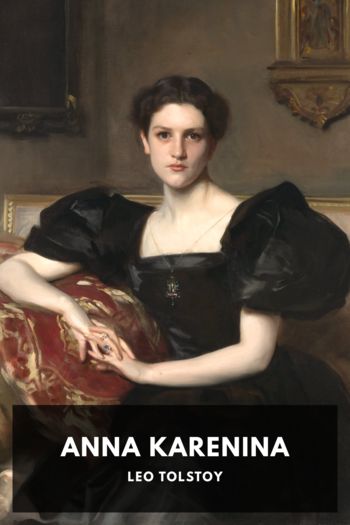What Is Art? Leo Tolstoy (good books to read for 12 year olds TXT) 📖

- Author: Leo Tolstoy
Book online «What Is Art? Leo Tolstoy (good books to read for 12 year olds TXT) 📖». Author Leo Tolstoy
Not only do normal, labouring country people possess the capacity to be infected by good art—“the epic of Genesis, folk-legends, fairytales, folk-songs, etc.,” but they themselves produce songs, stories, dances, decorations, etc., which are works of true art. Take as examples the works of Burns or Bunyan, and the peasant women’s song mentioned by Tolstoy in Chapter XIV, or some of those melodies produced by the negro slaves on the southern plantations, which have touched, and still touch, many of us with the emotions felt by their unknown and unpaid composers.
The one great quality which makes a work of art truly contagious is its sincerity. If an artist is really actuated by a feeling, and is strongly impelled to communicate that feeling to other people—not for money or fame, or anything else, but because he feels he must share it—then he will not be satisfied till he has found a clear way of expressing it. And the man who is not borrowing his feelings, but has drawn what he expresses from the depths of his nature, is sure to be original, for in the same way that no two people have exactly similar faces or forms, no two people have exactly similar minds or souls.
That in briefest outline is what Tolstoy says about art, considered apart from its subject-matter. And this is how certain critics have met it. They say that when Tolstoy says the test of art is internal, he must mean that it is external. When he says that country peasants have in the past appreciated, and do still appreciate, works of the highest art, he means that the way to detect a work of art is to see what is apparently most popular among the masses. Go into the streets or music-halls of the cities in any particular country and year, and observe what is most frequently sung, shouted, or played on the barrel-organs. It may happen to be
“Tarara-boom-deay,”
or,
“We don’t want to fight,
But, by Jingo, if we do.”
But whatever it is, you may at once declare these songs to be the highest musical art, without even pausing to ask to what they owe their vogue—what actress, or singer, or politician, or wave of patriotic passion has conduced to their popularity. Nor need you consider whether that popularity is not merely temporary and local. Tolstoy has said that works of the highest art are understood by unperverted country peasants—and here are things which are popular with the mob, ergo, these things must be the highest art.
The critics then proceed to say that such a test is utterly absurd. And on this point I am able to agree with the critics.
Some of these writers commence their articles by saying that Tolstoy is a most profound thinker, a great prophet, an intellectual force, etc. Yet when Tolstoy, in his emphatic way, makes the sweeping remark that “good art always pleases everyone,” the critics do not read on to find out what he means, but reply: “No! good art does not please everyone; some people are colour-blind, and some are deaf, or have no ear for music.”
It is as though a man strenuously arguing a point were to say, “Everyone knows that two and two make four,” and a boy who did not at all see what the speaker was driving at, were to reply: “No, our newborn baby doesn’t know it!” It would distract attention from the subject in hand, but it would not elucidate matters.
There is, of course, a verbal contradiction between the statements that “good art always pleases everyone” (see here), and the remark concerning “people of our circle,” who, “with very few exceptions, artists and public and critics, … cannot distinguish true works of art from counterfeits, but continually mistake for real art the worst and most artificial” (see here). But I venture to think that anyone of intelligence, and free from prejudice, reading this book carefully, need not fail to reach the author’s meaning.
A point to be carefully noted is the distinction between science and art. “Science investigates and brings to human perception such truths and such knowledge as the people of a given time and society consider most important. Art transmits these truths from the region of perception to the region of emotion” (see here). Science is an “activity of the understanding which demands preparation and a certain sequence of knowledge, so that one cannot learn trigonometry before knowing geometry.” “The business of art,” on the other hand, “lies just in this—to make that understood and felt which, in the form of an argument, might be incomprehensible and inaccessible” (see here). It “infects any man whatever his plane of development” (see here), and “the hindrance to understanding the best and highest feelings (as is said in the gospel) does not at all lie in deficiency of development or learning, but, on the contrary, in false development and false learning” (see here). Science and art are frequently blended in one work—e.g., in the gospel elucidation of Christ’s comprehension of life, or, to take a modern instance, in Henry George’s elucidation of the land question in Progress and Poverty.
The class distinction to which Tolstoy repeatedly alludes needs some explanation. The position of the lower classes in England and in Russia is different. In Russia a much larger number of people live on the verge of starvation; the condition of the factory-hands is much worse than





Comments (0)